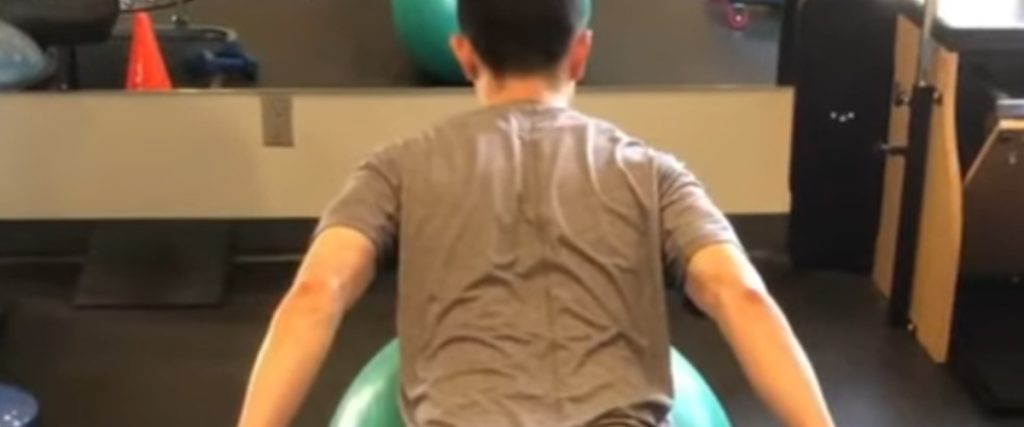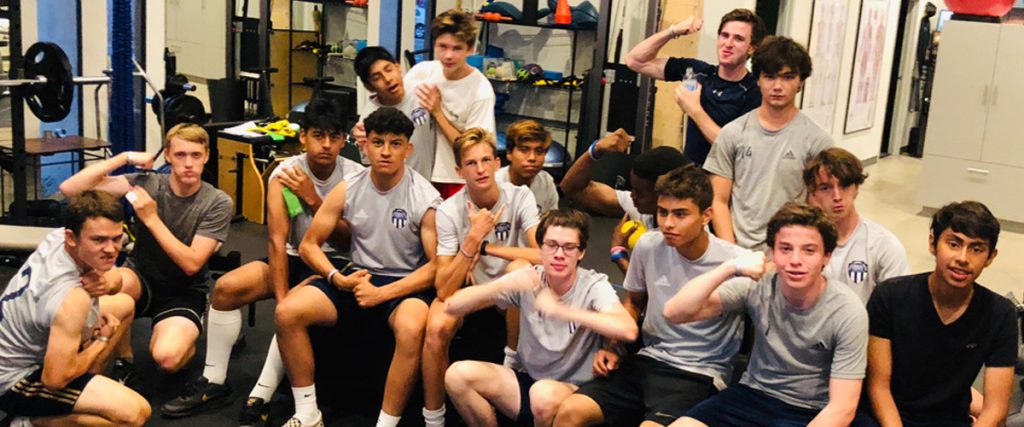SHOULDER FOUNDATION STABILIZATION SERIES
ELEVATE Shoulder Stabilization Series Part I DO YOU HAVE SHOULDER PAIN? One of the most common impairments we see among our patients with shoulder pain is weakness of the muscles that control the scapula (aka the shoulder blade). This is distinct from the rotator cuff muscles which control glenohumeral joint (aka the ball and socket joint). If the shoulder was a house, the scapula would be it’s FOUNDATION. If the foundation of the shoulder is compromised then the risk injury may be higher. Three key muscles that help strengthen and control this foundation are the middle/lower trapezius and the serratus anterior. Together, these muscles help keep the scapula secured onto the thoracic spine during overhead shoulder movement and allow the rotator cuff muscles to work more effectively, thus improving performance and reducing injury risk! If you want to learn how to make a strong shoulder foundation, read on for PART II of our Shoulder Stabilization Series 🏼 ELEVATE Shoulder Stabilization Series Part II HOW TO STRENGTHEN YOUR SHOULDER FOUNDATION PART II – Progression Level 1️⃣ (Isometrics): Prone A’s, T’s, and Y’s. While laying on your stomach of on a Swiss ball, position your arms to form an ‘A’, ‘T’, or ‘Y’. Pinch your shoulder blades back as if you were trying to grab a pencil with your shoulder blades. At the same time drive the shoulder blades down towards your feet to prevent excessive shrugging. Hold each position for 30-60 seconds for 2-3 sets. This exercise appears simple but can be extremely challenging for those who are not used to recruiting these muscles. _ Progression Level 2️⃣ (Isotonics): In the same positions at level 1, add resistance via weight or resistance bands and allow your arms to slowly lower to the ground (eccentric phase) and then rise back to the starting position (concentric). Choose a weight where 3 sets of 15 can be performed successfully. _ Progression Level 3️⃣ (sitting or standing): the third progression helps train the individual to use the middle and lower trapezius in a more upright position, which is where people more commonly perform overhead movement throughout their day. Using a resistance band or cables, perform the A’s, T’s, and Y’s in sitting or standing (standing tends to be more challenging due to it being easier to compensate with the lumbar extensors). Choose a weight where 3 sets of 15 can be performed successfully. _ This progression is not the only way to improve scapular strength but it has been found to be effective for improving mid/low trapezius recruitment and shoulder functional outcomes among persons with shoulder impingement. _ De May et al. Scapular Muscle Rehabilitation Exercises in Overhead Athletes with Impingement Symptoms. The American Journal of Sports Medicine. 2012. _ Read on for Part III where we go over how to strengthen another crucial shoulder muscle: the serratus anterior! ELEVATE Shoulder Stabilization Series Part III HOW TO STRENGTHEN YOUR SHOULDER FOUNDATION PART III _ The serratus anterior is another underutilized muscle group among those with shoulder dysfunction. Here are a few exercises to improve activation and strength of this muscle. _ Exercise 1, Quadruped Rockbacks: Begin by going onto your hands and knees. In this position, push your hands into the ground as if you were trying to push the earth away from you while also trying to spread the floor apart with your hands. Maintain this force while bringing your butt towards your heels similar to a child’s pose, and then return to the start position. You should feel muscle activation occurring at the outside of your shoulders. Recommended dosage: 3 sets of 15 repetitions. _ Exercise 2, Quadruped Circles: Similar to exercise 1, begin on hands and knees and press into the floor with your hands while also spread the floor apart. Shift your body weight to either the right or left hand and begin moving your body in circles over that hand. You should feel muscle activation occurring at the outside of your shoulders. Recommend dosage: 3 sets of 15 circles clockwise and 15 circles counter clockwise and then switch hands. This can be progressed to a modified plank or full plank position. _ Exercise 3, Scapular Push-Ups: Begin on hands and knees similar to the first two exercises. Allow your shoulder blades to relax, bringing your chest closer to the ground without bending at the elbows. Then bring your chest away from the ground by bringing your shoulder blades forward (towards the ground). While in this position, lift the knees 1 inch from the ground to increase resistance against the shoulder girdle. Recommend dosage: 3 sets of 15 repetitions with 1 second hold. This can be progressed to a modified plank or full plank position.


